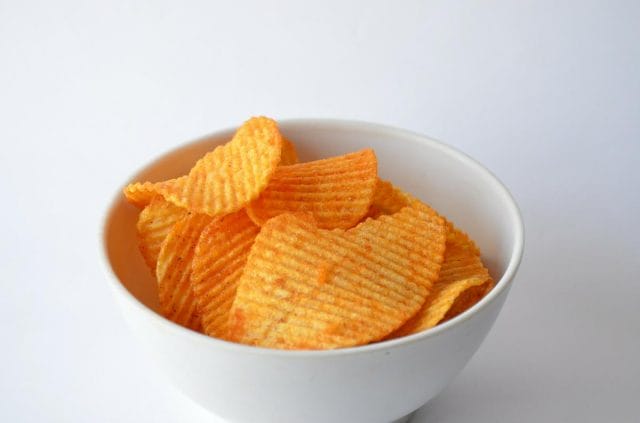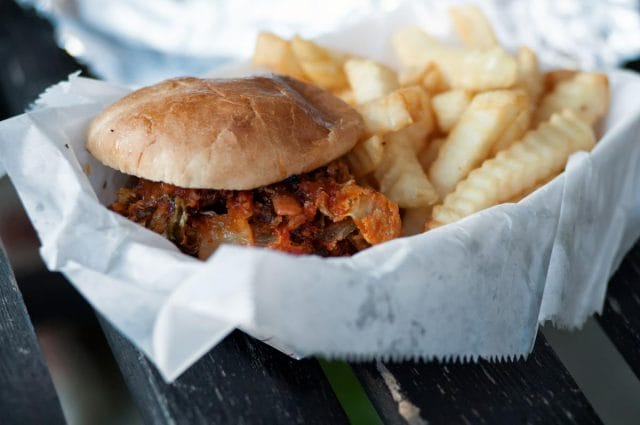It’s not often that the reviews of a product on Amazon go viral. But that’s what happened with Haribo’s sugar-free gummy bears when people started calling them “Satan’s Hate Bears.”
Customers don’t object to the taste. “For taste I would rate these a 5,” one reviewer wrote. “I was a happy camper.”
No. The problem with the sugarless gummy bears is their unfortunate side effect of gastrointestinal distress. Or, to put it less delicately: extreme, debilitating diarrhea.
One reviewer compared the flatulence he experienced to “trumpets calling the demons back to Hell.” Another said digesting the gummy bears felt like a “violent hurricane… in my lower intestine.” A third suggested that the diarrhea-inducing gummy bears made an “ideal gift for your Congressional Representatives.” The product page has nearly 1,000 reviews like this.
The offending ingredient in the Haribo gummy bears is lycasin, a sugar replacement meant to make sugarless gummy bears taste just as good as the original. It succeeds at this, but since lycasin can’t be fully digested, its effect on the digestive system is like eating years-old takeout.
To today’s Whole Foods sensibilities, it seems appropriate that Haribo’s attempt to give consumers a mass produced, sugary snack without any downside would fall flat. Eating healthy means washing dirt off produce, not tweaking the ingredients of candy in a lab.
Thirty years ago, however, the food industry thought products like Haribo’s gummy bears were the future. While sugar is now the villain of the health industry, Americans then perceived fat as the main offender. So when the huge consumer goods company Procter & Gamble (P&G)—whose empire included brands like Pringles and Jif—developed olestra, a fat substitute that added no calories to food, its scientists and executives thought they had a blockbuster.
In the 1990s, P&G and other food companies released Tostitos Light, Wow! potato chips, and sugarless candies that used olestra, lycasin, and similar ingredients. They promised diet-crazed Americans that they could binge on packaged cookies, chips, and crackers without sacrificing taste.
Consumers of the new olestra-laden snacks, however, suffered like the unfortunate souls who bought Haribo sugarless Gummy Bears. The promised utopia of consequence-free snacking died in the fetal position between rushed trips to the bathroom.
The Invention of a Miracle Product
Olestra was an ironic discovery.
In 1968, two Procter & Gamble researchers attempting to synthesize products that could deliver fat to prematurely born babies created sucrose polyester, which P&G dubbed olestra. Olestra completely failed at helping premature babies; the “large and fatty” molecules passed right through digestive systems without being absorbed.
But olestra also bound to molecules like cholesterol and whipped them right out of the body. Seeing dollar signs for a cholesterol-reducing drug, P&G sought approval from the Food and Drug Administration (FDA) for olestra—a push that failed after 10 years of failing to adequately demonstrate its health benefits.
Undeterred, P&G spent millions to develop olestra as a fat substitute. Unlike artificial sweeteners widely used in diet sodas, olestra is “as much a process as a compound,” so olestra could healthify the fatty ingredients—like cooking oils—of many food products by making them indigestible. If people didn’t digest them, it would be like they didn’t even eat them, and P&G could both use olestra in all its food products and license it McDonald’s, Frito-Lay, and every company that made fatty foods.
“The day P&G brings out Olestra it will be in potato chips, cookies, french fries—endless products,” one analyst predicted in 1990. “We’re talking about major, major big-time markets and billions and billions of dollars. Just think about all of the diet-conscious Americans.”
As P&G executives applied for FDA approval, they must have had big plans for their bonuses.
“Side Effects Include…”
Procter & Gamble could make a compelling case for olestra as a boon to public health. As the medical community worried about rising obesity rates, olestra promised to dramatically reduce Americans’ fat and calorie intake.
Yet the FDA approval process proved to be an uphill battle.
P&G had first seen potential in olestra due to its ability to bind to cholesterol and sweep it out of the body, and this led health professionals to worry that olestra would do the same with beneficial substances. Both P&G and independent researchers found that olestra decreased the absorption of certain vitamins and carotenoids—something found in fruits and vegetables that correlates with better health.
“The impaired absorption of fat-soluble vitamins, including carotenoids,” Dr. Ian Greaves of the University of Minnesota School of Public Health told a panel on olestra, “are sufficient reasons to have serious reservations about this food additive and to recommend that it not be introduced.”
Olestra also faced an objection that even fast-food fanatics cared about. Like sugarless gummy bears, olestra did not sit well with consumers. One independent study found that 16 potato chips made with olestra caused diarrhea in half of the participants. The Center for Science in the Public Interest reported that a “63-year-old Indianapolis woman ruined three pairs of underwear and had no friends for two days after eating olestra chips.”
Even Procter & Gamble’s own initial studies found that both rats and later human testers reported increased rates of gastrointestinal distress. But executives at the company kept pursuing FDA approval.
The Race to No Fat
After five years of struggling for approval without success, the bigwigs at P&G were nervous. After nearly a quarter century of developing olestra, at a cost of $200 to $300 million, the company seemed to be losing the race to dominate the low-fat food industry.
Monsanto, makers of Astroturf, had already introduced Simple Pleasures frozen desserts using a fat substitute called Simplesse. Although Simplesse broke down under heat, which meant it didn’t threaten olestra’s use in cooking oils and deep fryers, Monsanto enjoyed the jump in stock price P&G craved. Simplesse won approval with expectations of sales worth $300 million to $1 billion per year.
At the same time, in 1990, Kraft asked for FDA approval for its own fake fat, as did Arco Chemical. PepsiCo (maker of Lay chips) and Unilever (maker of just about everything) also spent millions researching fat substitutes.
So P&G went on an aggressive campaign to get olestra to market. The company invited the executive chef of the Four Seasons to cook healthy meals with olestra. To address the vitamin concern, P&G limited its application to savory snacks like chips and excluded foods like tortillas, arguing that since people eat chips at different times than their veggies, the damage would be minimal. (P&G also fortified its foods with additional vitamins and carotenoids.)
In response to FDA demands, P&G spent millions running studies on the incidence of gastrointestinal distress. While the Center for Science in the Public Interest criticized them as “designed not to find problems,” and independent studies still found high rates of diarrhea and gas, P&G’s new studies showed no such problems. The company compared complaints about diarrhea to the laxative effect of eating bran or other high-fiber foods. According to them, it was a normal phenomenon.
The final ingredient was lobbying. P&G spent millions courting health officials through research grants and consulting fees. On the advisory committee debating olestra, 9 of the 17 members who ultimately voted in favor were food industry consultants whom one member described as “acting as proponents” for olestra.
And it worked. In January 1996, the FDA finally granted approval—under one condition: Olestra foods had to be labelled with a warning that “Olestra may cause abdominal cramping and loose stools.”
Paradise Lost
In 1998, olestra hit stores nationwide in the form of P&G’s fat free Pringles and Frito-Lay “Wow!” chips. Sales were high initially, but quickly fell from $400 million to $200 million between 1998 and 2000. By 2002, the Center for Science in the Public Interest felt confident enough to declare olestra “a moribund, if not totally dead, product.”
What doomed olestra? Health concerns kept olestra from receiving approval in Canada and much of Europe. In the United States, while many consumers said that olestra products tasted as good as the original, a chorus of people claimed it tasted inferior. Olestra products also came with a higher price tag.
A warning label about loose stools probably didn’t help sales either.
Olestra never escaped its association with diarrhea. The reputation is enduring: When Quartz wrote about olestra chips in 2014, the author wrote, “Remember Olestra? Those gut-wrenching chips from the 90s?”
So why did P&G—and so many other companies—make these products? The olestra story easily fits the narrative of a corporation pushing unhealthy foods. But that story doesn’t necessarily seem right. Olestra wasn’t a triumph of greed; the failure of P&G’s fat free revolution hurt the company’s bottom line.
P&G and Haribo both declined interview requests, which means we can only speculate.
One contributing factor was surely the enormous pressure executives must have faced—Procter & Gamble had invested hundreds of millions of dollars over two decades, which was a period so long that its olestra patent would soon run out.
It’s also possible that individuals at P&G fell for their own story. After all, many impartial observers found the P&G company line—that health concerns were overblown and the FDA was dragging its feet—convincing. In a 2001 issue of the New Yorker, Malcolm Gladwell “put the Olestra controversy into perspective” by comparing it favorably to the effects of eating vegetables with fiber. Visiting a Procter & Gamble test kitchen in 1997, the Wall Street Journal’s Raju Narisetti said he had “eaten plenty of chips made with olestra to no ill effect.” He thought they tasted good.
And what a story it was! Gladwell wrote that fast food was killing us—and olestra was the cure. While health advocates wanted Americans to give up chips and burgers, the food industry believed it had a win-win solution to sell those foods as diet food. Ingredients like olestra and lycasin were not fake fat and sugar; they were real, delicious fat and real, delicious sugar that magically had no consequences.
But as people who ate these products learned, the story was too good to be true. And in 2011, a Purdue study hammered the final nail in the olestra coffin. It found that olestra incites weight gain by tricking the body into thinking it doesn’t need to metabolize fatty foods. Once your body is accustomed to olestra fat that has no calories, the body is surprised by the calories of real fat.
This finding fits our current organic ethos, but it would have surprised parents in the 1990s (the Snackwells generation) who regarded fat-free cookies and crackers as healthy. It’s only recently that applying the laboratory to our food supply ceased to seem futuristic and in vogue.
Today, olestra has achieved immortality, just not in the way its inventors expected: In 2010, TIME Magazine ranked it as one of the 50 worst inventions of all time.
Our next article looks back at the 1970s ad campaign that branded bottled water as “Earth’s first soft drink”. To get notified when we post it → join our email list.
Priceonomics ran an earlier version of this article on May 1, 2014.
![]()
Note: If you’re a company that wants to work with Priceonomics to turn your data into great stories, learn more about the Priceonomics Data Studio.






